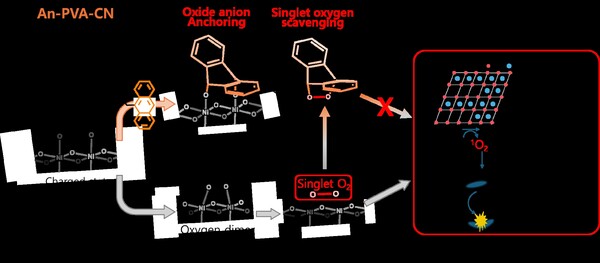New anthracene-based gel electrolyte suppresses oxygen reactions, extending high-voltage lithium-ion battery life by 2.8 times

A research team at the Ulsan National Institute of Science and Technology (UNIST) has developed a new gel-type solid electrolyte that significantly increases the lifespan of high-voltage lithium-ion batteries while improving safety. The advance is expected to influence next-generation electric vehicles, aerospace batteries, and large-scale energy storage systems (ESS).
The team, led by Professor Song Hyun-gon of the Department of Energy and Chemical Engineering at UNIST, worked in collaboration with Dr. Jung Seo-hyun of the Korea Research Institute of Chemical Technology and Dr. Hwang Chi-hyun of the Korea Electronics Technology Institute. The researchers created an anthracene-based semi-solid gel electrolyte, referred to as An-PVA-CN.
Demand for lightweight, high-capacity batteries has increased the use of high-voltage charging above 4.4V. However, this condition causes oxygen in high-nickel cathodes to convert into reactive oxygen species (ROS), which degrade electrolytes, accelerate battery aging, produce gas expansion, and increase the risk of thermal runaway and explosion.
The newly developed electrolyte directly addresses this issue. The anthracene component captures and neutralizes reactive oxygen species at the source, preventing chain reactions that lead to degradation. Meanwhile, the nitrile (-CN) functional group stabilizes nickel ions within the cathode structure, preventing metal dissolution and structural collapse.
The performance differences were evident in comparative testing. Conventional lithium-ion batteries showed capacity degradation below 80% after approximately 180 charge-discharge cycles under high-voltage conditions—effectively signaling the end of battery life. In contrast, batteries incorporating the new semi-solid electrolyte retained 81% of their initial capacity even after 500 cycles.
Researchers evaluated the result as a 2.8-fold improvement in battery lifespan.
“This study demonstrates that oxygen-driven degradation processes in high-voltage batteries can be controlled at the electrolyte design level,” Professor Song said. “The approach provides a pathway for long-life, high-safety batteries that can also be applied to aerospace systems and large-scale ESS technology.”
The findings were published online on November 5 in the international journal Advanced Energy Materials.


